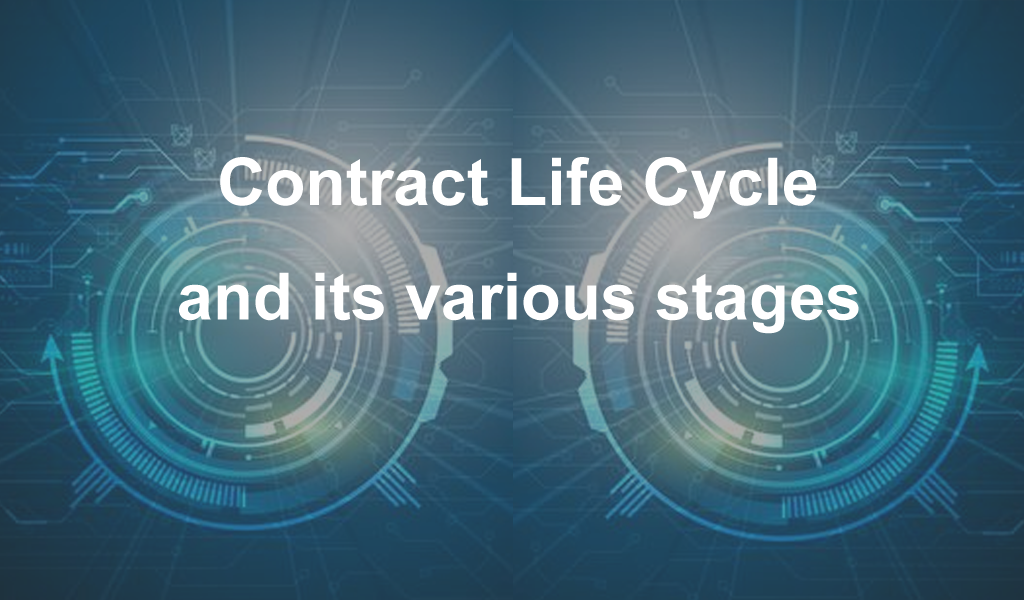Dear Readers,
In previous posts we discussed the meaning and definition of Contract, Agreement and Consideration. Subsequent posts briefly touched Contracts Laws and Principles. To read last posts again, please click on link below;
http://www.rkstrainings.com/contract-principles-equity-justice-and-reasonableness/
In this post, let us discuss Contract Life Cycle and its 4 distinct stages as mentioned below

A) Stage 1 of Contract Life Cycle – Identifying Contract Objectives
This is first stage of Contract Life Cycle. This deals with WHY to enter into a contract and WHAT is the purpose of signing a binding agreement. This stage addresses questions such as: what a person want or desire to have. Accordingly, this want or need, when worded in the form of a statement, becomes the purpose or goal to achieve. Subsequently, the purpose emerges into clearly defined and measurable requirements called objectives. Accordingly, Contract Life Cycle starts when a person has certain need or desire and he wishes to fulfil the same
Let us illustrate the above with a simple example
Let us assume Raj wants to see his house painted before Diwali and Diwali falls 90 days from now. Therefore, Raj’s need or purpose is to get the house painted within next 90 days. In order to achieve the purpose, Raj needs to find out the followings
- Detailed Scope for Painting Work (work items / quantities)
- Paint specifications, manufacturer & color and application requirements
- Amount of money he want to spend
- Time available to plan and execute the Work
From the above, we see that the purpose of having the house painted gets translated into followings “specific requirements”
- Scope of work (SCOPE)
- Color/manufacturer/specification (QUALITY)
- Budget and Funds Allocation (COST)
- Time for completion for entire Works (TIME)
Above requirements in term of Scope, Cost, Time & Quality are called Contract Objectives. These objectives shall become the basis of forming a contract with the eventual painter
Stage 2 of Contract Life Cycle – Contract Formation
It is second stage of a Contract Life Cycle. It starts upon finalization of contract objectives. Here Raj needs to identify a person/painter who can meet the above mentioned contract objectives. Subsequently, he will sign a legally binding agreement with selected agency
Above stage which ends with signing of agreement between the parties is called Contract Formation. Such signed contract shall become the basis of work execution. Here both parties commit to execute the work as per contract
It is also called planning stage because here;
- Works execution planned
- Requirements and responsibilities of parties frozen
- Price and payment terms agreed and
- Time period for work execution fixed
Stage 3- Contract Administration
The word administration means to execute, follow up, enforce or implement what has been stated in a policy or law or a rule book. This is third stage of Contract Life Cycle and is known as work execution stage. Work is actually performed and delivered here. During this stage, parties execute the work and discharge their responsibilities as per contract
For painting example, painter execute the work in accordance with agreed technical requirements and timelines. Accordingly, Raj see that, job has been performed as per the contract. Also, Raj make due payment as agreed. Here owner receives the painting services and painter receives the agreed money. Hence, parties receive what they wanted & intended contract objectives are met
Stage 4 – Contract Closure
This is final stage of the Contract Life Cycle. Here parties intend to come out of the binding relationship. This is because, there is no need to continue the contractual relationships anymore when
- Owner gets the painting services to his full satisfaction and
- Painter receive due payment
- Intended contract objectives met for both parties
Once both parties have discharged their responsibilities under the contract, they need to formally close the contract. This is necessary so that parties are free from any further obligation towards each other. The cycle ends here upon formal contract closure
=======================================================================
Next Post – Contract Administration versus Management
=======================================================================
Disclaimer Statements: http://www.rkstrainings.com/disclaimer-statements/
=======================================================================


